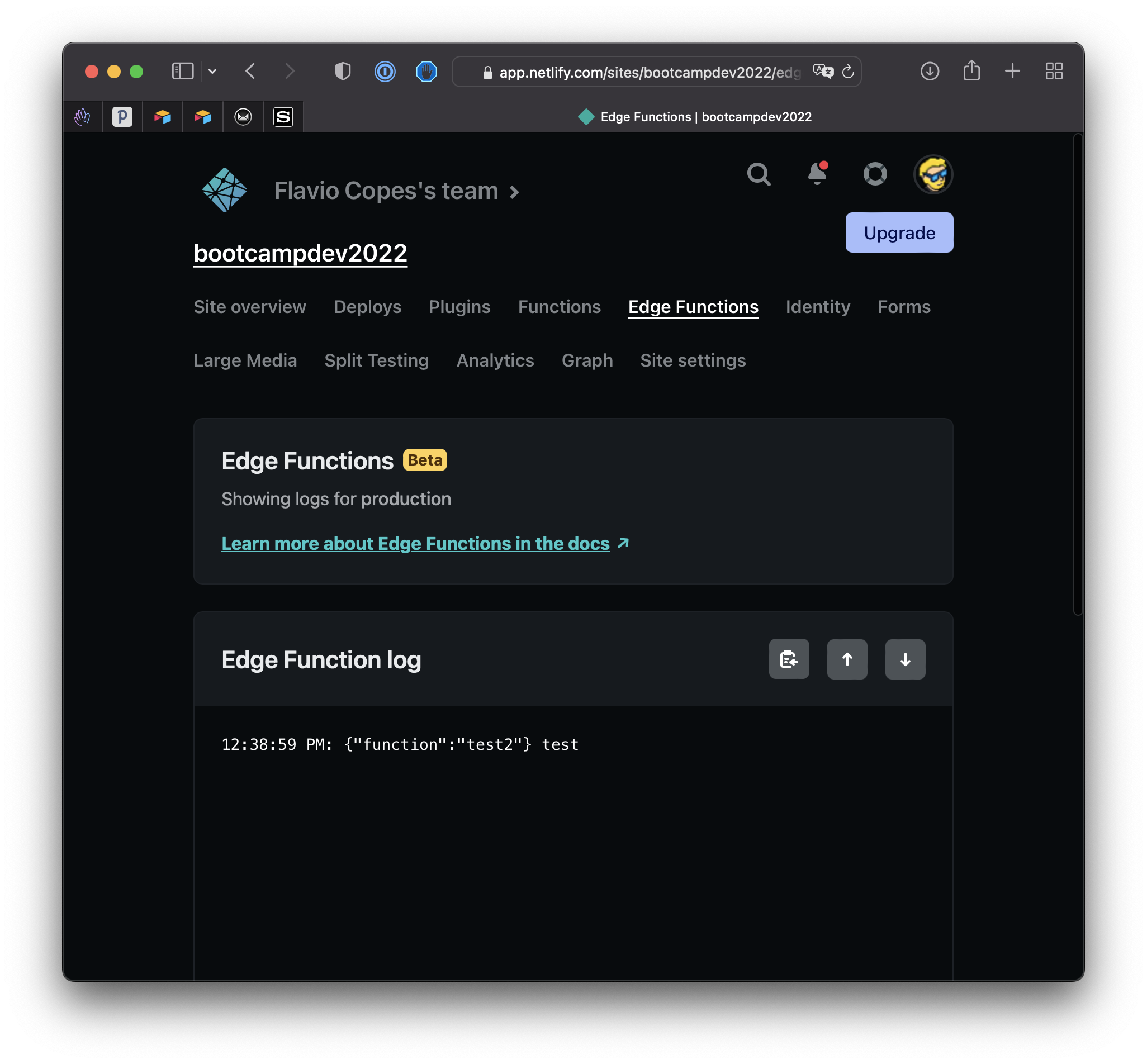How to use Netlify Edge Functions
A hands-on guide to Netlify Edge Functions
Netlify Edge Functions are a very interesting feature offered by Netlify, the popular hosting platform.
It’s interesting because while Netlify is famous as a static hosting, Edge Functions allow you do do things that are …not so static.
Allowing us to do things like:
- geolocation
- localization
- A/B testing
- redirects
- …and much more
They are similar to Netlify Serverless Functions, except they run on the Netlify Edge which means they are closer to the user and run on multiple CDN locations, and they are counted differently (3m calls/month instead of 125k calls per site/month).
To enable Edge Functions you create a netlify.toml file in your website repository (if you don’t have one already) with this content:
[[edge_functions]]
function = "hello"
path = "/hello" function is the file name in netlify/edge-functions/ without the .js extension.
path is the URL path this function will be available on
Then you can write a function in a file netlify/edge-functions/hello.js:
export default () => new Response("Hello world")Response is an object we have available to send the response back to the client.
and once you deploy the repository, you can access its result using the URL
https://<YOURSITEDOMAIN>/helloTry it!
During the deploy you will see this in the logs:

And once the deploy is done, you’ll see a page dynamically generated with the content Hello, World!.
But I recommend first to test them locally using the Netlify CLI netlify dev. Make sure it’s up to date with npm i -g netlify-cli otherwise it might not have the feature enabled.
You can set the response headers, like the content type for example, passing a second parameter to new Response():
export default () =>
new Response('Hello world', {
headers: { 'content-type': 'text/html' },
})The edge function receives two arguments: request and context:
export default (request, context) => {
//...
}Those two objects provide interesting features.
request allows you to access all the request data, and it’s the same request object you get when using the Fetch API.
context allows you to access cookies, geolocation data, json, log, and more.
You can write to the logs using context.log():
export default (request, context) => {
context.log('test')
}You can see the logs in the Edge Functions menu of your website:

You can return JSON using the context.json function:
export default (request, context) => {
return context.json({ hello: 'world' })
}If you want to write more than one function, you add other entries in netlify.toml:
[[edge_functions]]
function = "hello"
path = "/hello"
[[edge_functions]]
function = "second"
path = "/second"The function can be async if you plan to use promise-based APIs like the Fetch API to get some JSON from a remote server:
export default async () => await fetch('https://dog.ceo/api/breeds/image/random')or even an image directly:
export default async () => await fetch('https://placekitten.com/g/300/300')You can get the user’s location:
export default async (request, context) =>
new Response(`
Country code: ${context.geo?.country?.code}
Country name: ${context.geo?.country?.name}
City: ${context.geo?.city}
Subdivision: ${context.geo?.subdivision?.code} - ${context.geo?.subdivision?.name}
`)Tip: does only work on the edge, not locally
There’s an example on the Netlify docs on how to use this to block access to your website from a country, for example.
Working with cookies you can set a cookie in this way:
export default (request, context) => {
context.cookies.set({
name: "alreadyvisited",
value: "yes"
})
}You can use context.cookies.get() to read the value of a cookie, or context.cookies.delete() to delete a cookie.
You can access environment variables using Deno.env.get(), like this:
Deno.env.get('YOUR_VARIABLE')Example:
export default () => new Response(Deno.env.get('YOUR_VARIABLE'))I take this last example to say that Netlify Edge Functions run on Deno.
Learn more about Deno in my Deno tutorial!
That’s it for this overview, hopefully it gave you some ideas on how to use them for your use case.
I think they are pretty cool and maybe you will use them without even realizing when you deploy a Next.js or Remix or SvelteKit app on Netlify, and they use this feature under the hood.
I recommend you check out the full examples library on https://edge-functions-examples.netlify.app and read more about the Web APIs you can use on https://docs.netlify.com/netlify-labs/experimental-features/edge-functions/api/
download all my books for free
- javascript handbook
- typescript handbook
- css handbook
- node.js handbook
- astro handbook
- html handbook
- next.js pages router handbook
- alpine.js handbook
- htmx handbook
- react handbook
- sql handbook
- git cheat sheet
- laravel handbook
- express handbook
- swift handbook
- go handbook
- php handbook
- python handbook
- cli handbook
- c handbook
subscribe to my newsletter to get them
Terms: by subscribing to the newsletter you agree the following terms and conditions and privacy policy. The aim of the newsletter is to keep you up to date about new tutorials, new book releases or courses organized by Flavio. If you wish to unsubscribe from the newsletter, you can click the unsubscribe link that's present at the bottom of each email, anytime. I will not communicate/spread/publish or otherwise give away your address. Your email address is the only personal information collected, and it's only collected for the primary purpose of keeping you informed through the newsletter. It's stored in a secure server based in the EU. You can contact Flavio by emailing flavio@flaviocopes.com. These terms and conditions are governed by the laws in force in Italy and you unconditionally submit to the jurisdiction of the courts of Italy.